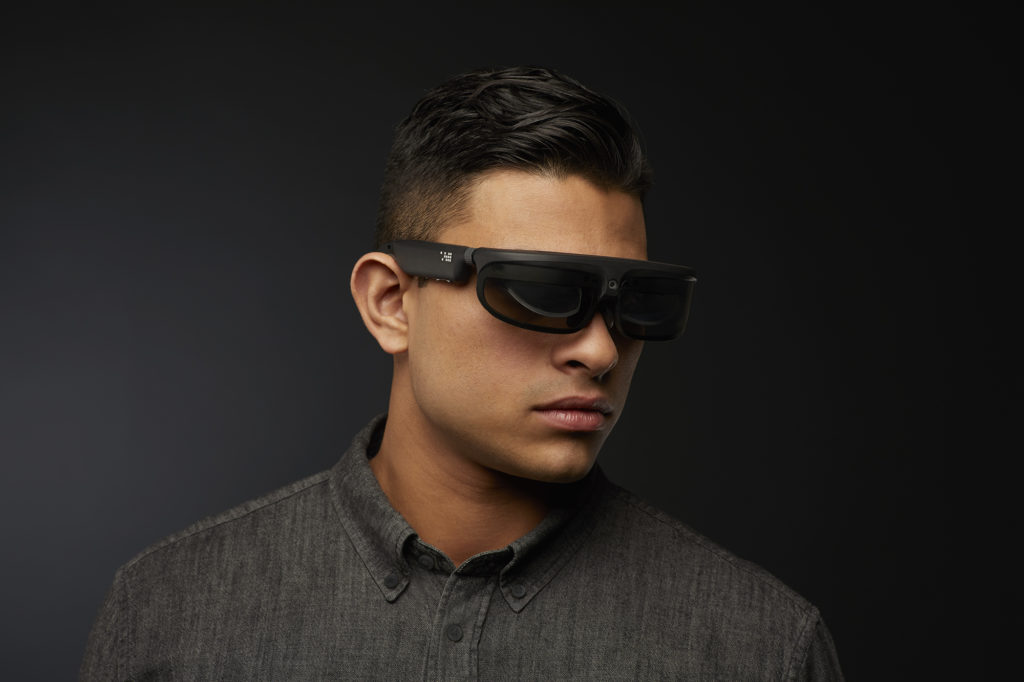CES 2017 kicks off this week in Las Vegas and augmented reality (AR) will be a central theme at the show. Osterhout Design Group (ODG) is debuting a pair of new AR smartglasses that will ship in the second half of 2017 that have been designed for the early adopter consumer marketplace. Both wearables feature Qualcomm’s new Snapdragon 835 processor, which will open up a variety of gaming, entertainment and work functionality in AR. The R-8 will retail for under $1,000 and deliver a 40-degree view in 720p high definition with a 16:9 aspect ratio and weighs just 4.5 ounces. Additionally, the R-9 weighs 6.5 ounces, will retail for $1,800, and features a 50-degree view in 1080p high definition with a modular system that allows for gaming and other add-ons.
Pete Jameson, chief operating officer at ODG, told [a]listdaily that the Pokemon GO phenomenon will help his company bring smartglasses into the mainstream beginning this year.
“Pokemon GO took AR from early adopters and innovators and brought it into the masses,” Jameson said. “People that had no idea what we do or how we do it are chasing Pikachu around the neighborhood. We put Pokemon GO on the R-7 and superimposed it in the real world with our glasses. From an awareness standpoint, and informing the broader consumer market, it’s been fantastic. It’s similar to the impact Google Glass had with fantastic awareness, but then the reality of the experience was limited.”
Back in 2013, Google Glass was limited by the technology available at the time. “Google Glass was a low resolution static display off your up high and out of your field of view,” Jameson said. “Now picture putting on slightly oversized sunglasses that’s a full mobile computer—like a high-end tablet on your head. It’s Android-based and can do everything a smartphone or tablet can do. And it puts a 120-foot monitor floating in front of your eyes. The image quality is like watching an HD monitor. Our goal is to marry mobile architecture with this visual experience that allows you to experience VR content with no pixels—replicating the cinematic experience at a high level with augmented reality experiences that blend the digital and real world.”
ODG, which just raised a record $58 million in a Series A funding round from companies including 21st Century Fox, Shenzhen O-film Tech Co. and Vanfund Urban Investment & Development, is the first wearable powered by Qualcomm’s advanced processor. That opens up a lot of new opportunities for gaming, along with Android and Unity support. The company will showcase multiple AR demos powered by Vuforia, including the world’s first interactive racing game that combines augmented, virtual and mixed reality.
“We’re going early with these smartglasses at CES is to start and build that momentum in the developer community,” Jameson said. “We’ve already talked to all of the big game publishers.”
Strategically, focusing on Android has opened the door to a lot of games that can be optimized for the smartglasses. In addition, VR games will also run on the wearables. “You can’t take your game and have it run immediately because of the differences in the display systems, so a little work needs to be done,” Jameson said. “But it’s very straightforward and we expect developers to modify games for our glasses.”
Jameson said that if a game is developed with Unity, it will also be a straightforward to port from Windows 10 to ODG’s smartglasses. This opens the door in the future for VR games developed for Microsoft’s HoloLens and potentially Project Scorpio. “We love what’s happening in VR today, where there are a lot of developers creating great content and generating awareness,” Jameson said. “With our front-facing cameras, we’re merging digital content with the real world and taking VR and making it mobile.”
Outside of gaming, ODG will be demonstrating a variety of entertainment experiences from Fox, including an AR Alien experience, as well as Fox News, Fox Sports and National Geographic content. “We’ll have a series of experiences to showcase how these smartglasses would be used from a consumer perspective, from email and web browsing and 360 videos to mobile VR, augmented and mixed reality entertainment, and education,” Jameson said.
Having already become a staple across enterprise, scientific and educational fields with its R-7 smartglasses, ODG is expanding to the consumer market for the first time. ODG will be distributing the R-8 and R-9 globally this year. The company signed a deal in December with China Mobile’s MIGU.
“Eventually, we believe that head-worn devices will replace all the screens in your life,” Jameson said. “However today, R-8 and R-9 are designed as devices that complement your handheld devices, offering a richer and interactive visual experience for specific use cases. The glasses aren’t designed to be worn all the time, but rather to pull out of your pocket to play games, watch movies or use as a hands-free enterprise tool.”

